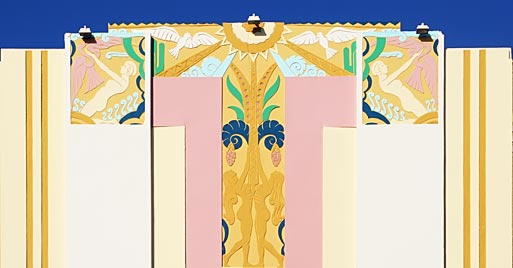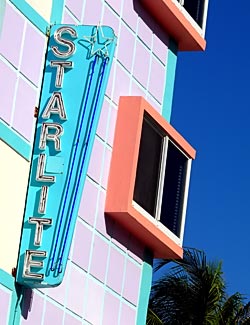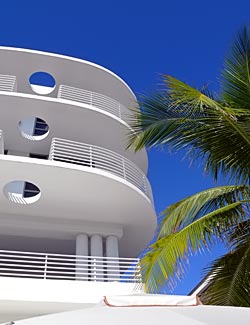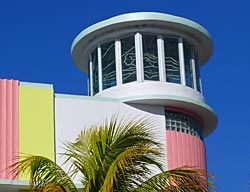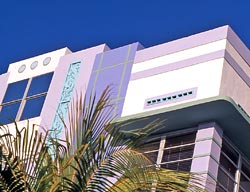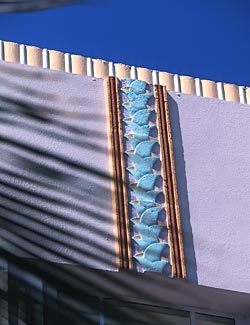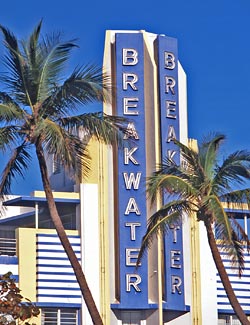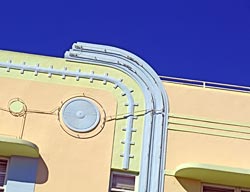
Crescent Hotel on Ocean Drive
The Miami Beach Art Deco District is a one-square-mile area that contains roughly 1,000 buildings which were constructed during the 1930s. The Miami Design Preservation League conducts daily walking tours of the Art Deco District and their guides provide a wealth of information along the way.
But, if you’d like to explore Miami Beach’s art deco design heritage on your own, simply take a stroll up Ocean Drive and down Collins Avenue, and there you’ll see 30 blocks of the greatest concentration of hotels and apartment houses that date from the 1920’s to the 1940’s.
Here are some photos and background information on Miami Beach’s Art Deco and Streamlined Moderne architecture to show you what you’ll see…
Moderne design is generally divided into two very different phases: “Art Deco” (once referred to as “Zig Zag Moderne”) of the 1920’s, and “Streamlined Moderne” of the 1930’s.
The first phase developed out of many sources, from the verticality of Eliel Saarinen to the forms of the Paris Exposition Internationale des Arts Décoratifs et Industriels Modernes of 1925. As a matter of fact, the term “Art Deco” is actually an abbreviation derived from the words “Arts Décoratifs.”
Art Deco is characterized by lavish decoration, extravagant colorism, and elaborate eclectic ornamentation.
The second phase, Streamlined Moderne, was based on a machine aesthetic. The term “streamlined” comes from aerodynamics to imply speed, efficiency, and functionalism. This style is characterized by reductive design, light smooth surfaces, rounded edges, and sparing geometric decoration.
Art Deco and Streamlined are not synonymous terms—they are distinctly separate facets of the Style Moderne.
Ocean Drive is one of the most picturesque streets on Miami Beach with numerous Art Deco hotels lining the west side of the street north from 5th Street to 14th Place.
(photos © Joseph Brown - Miami Beach Magazine)
